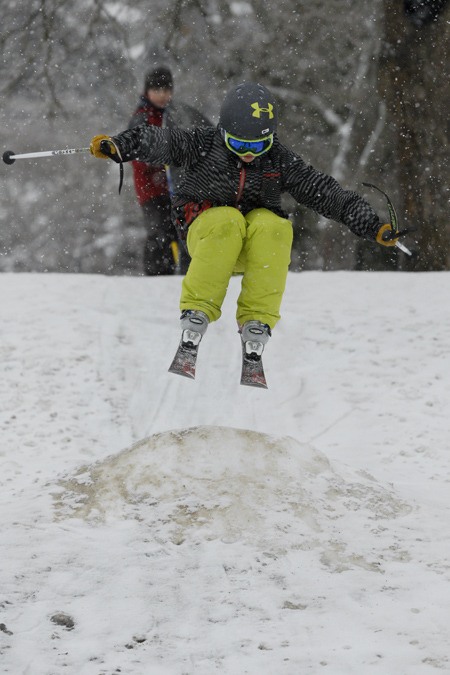As this new year continues to evolve, and the local Island snows recede, I’ve been thinking about some of the noteworthy changes and improvements that the snow sports industry has seen over the years. And you know what? There really have been quite a few, and I’m sure at least some of them have impacted you more than you might have recognized.
Let’s take a look, and although I don’t have specific dates, I’ll try putting them in relative chronological order.
Plastic boots and release bindings: Both came upon the scene during the ski craze in the early ’70s and have become major factors in the sport’s surge to popularity years later as well. Broken legs are no longer as prevalent as knee sprains.
Slope grooming: Aside from slow chair lifts and long waiting lines, the major reason why skiers could only get 10 runs in a day was the difficulty in negotiating the slopes. Before grooming, only the experts moved smoothly down the hill in any conditions. And there were few experts. Now we expect smoothly buffed slopes in the morning as we attack “fresh-cord.”
High-speed detachable chair lifts: When the high-speed detachable lifts arrived, it not only sped the time required to get back up the hill, but added a level of reliability that was missing in the old chairs. Plus, the new lifts came in denominations of four and six seats, usually replacing old double and triple lifts and increasing the number of people moving swiftly up the hill. And best of all, the chairs slow down enough upon loading and unloading that your butt isn’t all bruised at the end of the day.
Snowmaking: Like many items on this list, snowmaking didn’t just arrive in the last decade. It has merely been perfected. Snowmaking systems are now part of the planning process for ski areas hoping to hold onto their market share. In places like Sun Valley and Whistler and Crystal, they are now the key to successful early season business.
Snowboards: Most skiers originally thought snowboards were evil devices designed to cause havoc on the slopes. They made strange sounds, cut up the snow in unusual patterns, and the riders wore grungy clothing. Once skiers and ski area operators discovered that it was the snowboard industry that provided most of the growth in ski resort visits, the snowboarders were not only embraced, they are often given credit for design innovations that led to shaped skis.
Four-wheel drive vehicles: Remember when putting on chains was a real possibility when going to the mountains? Look around any ski area parking lot, and the percentage of 4WD vehicles is guaranteed to be high. Now you can just pack the vehicle and go.
Waterproof clothing that looks great: Modern fabric innovations have produced waterproof, lightweight, wind-blocking clothes that also wear well for skiing. I happily used them just last week walking through the Mercer Island snows.
Shaped Skis: Shaped skis extended the skiing life of a lot of longtime skiers, and certainly helped many intermediates figure out how to make carved turns. At first thought to be an innovation that would apply mostly to beginners and low intermediates, even Olympic racers now use them. Shaped skis have probably added 10 years to my knees.
Bargain season pass rates: While the daily lift ticket price at major resorts has gone from $10 to over $100 (Aspen $104), only a few snowriders are paying full price. There are package deals, pre-season deals, and even RFID cards whose value doesn’t expire. If you don’t have a sugar daddy, then find a deal — they are out there on the Internet.
Ski area cafeteria food: Remember when the best you could hope for at a ski resort was a hamburger with just a little grease? Things have really changed: the quality and variety of food served at most ski areas is a dramatic improvement. Salad bars and pasta are now as common as bowls of chili and burgers. Yes, the price has escalated accordingly (a not extravagant lunch for two at Whistler was $24), but at least I can still fit into my ski pants and not risk food poisoning. And my wife will now ski with me if the day includes a better lunch.
Helmets: At first, helmets were seen as dorky. Then we realized that not only our youngsters needed protection, so did the parents. Helmets are now stylish, comfortable, warm, and more visible than ever. The tables have completely turned; now you are a dork not to wear one.
What’s next? Jet propelled ski? Snowboards that dispense lattes? I can’t predict the next big innovation, but surely it will be here shortly. But even after it arrives, I will remain appreciative of all of the above.
John Naye is a Mercer Island resident and past president of the North American Snowsports Journalist’s Association, and attacks fresh cord with his helmet on. He can be reached at jnaye@trekworks.com.



